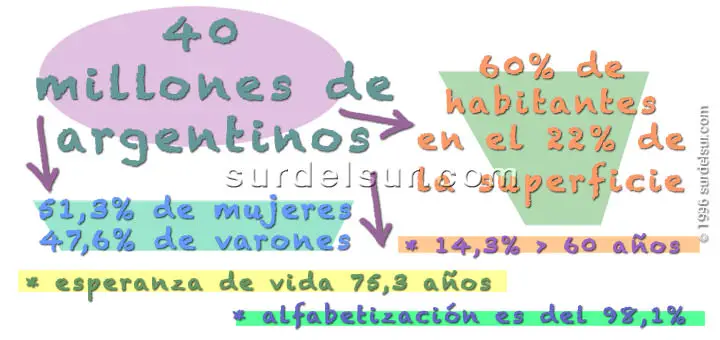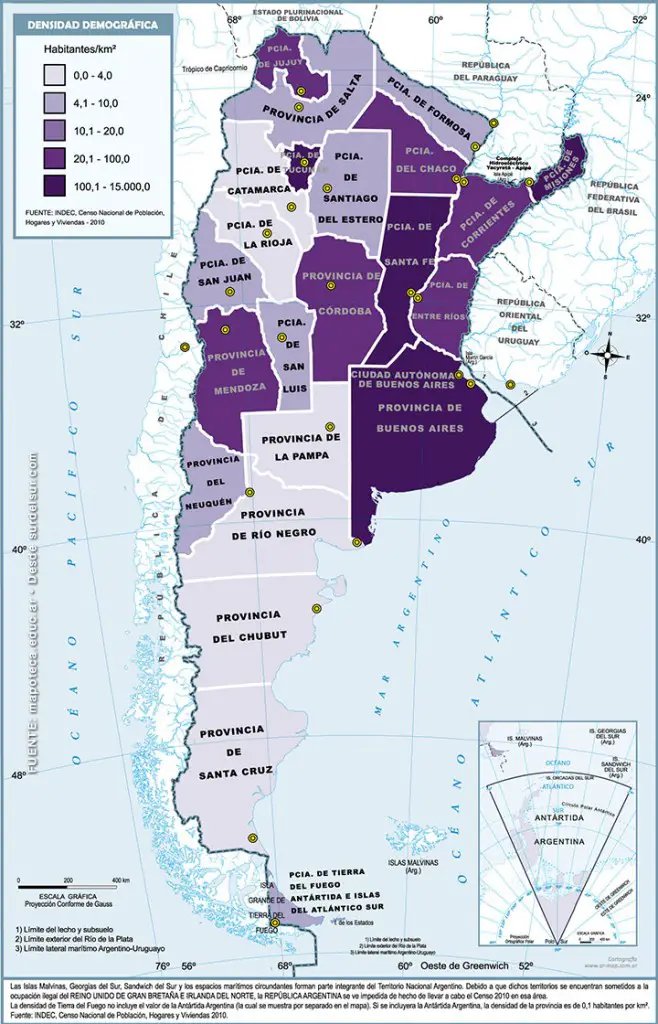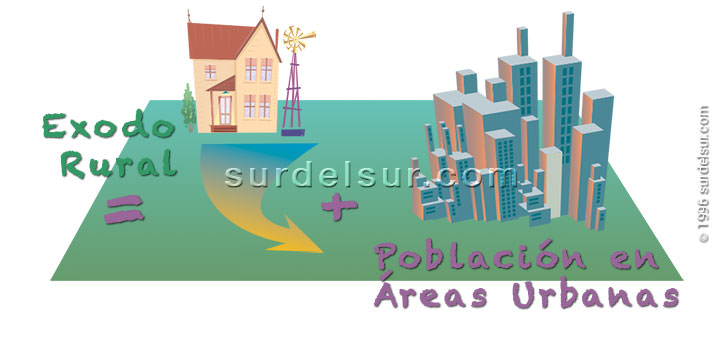In this report we are going to tell you about the Argentina demographic composition, population map with demographic density by province, territorial distribution of the population and data on the Argentine population abroad. All the data offered correspond to the last INDEC census carried out on October 27, 2010.
The population of Argentina is the result of the combination of a diversity of races and cultures. The immigration waves that were integrated with the “criollo” and native population generated a complex and unique identity. Tango, soccer and political passions, are just some of the manifestations of the cultural amalgam, which unites us under the same desire, expressed in the preamble to the National Constitution: “for all the honorable men who wish to inhabit the Argentine land”.
Argentina demographic composition
Argentina population is of 40,117,096 inhabitants, according to the last census of INDEC made October 27, 2010, with a density of 14.4 inhabitants / km2. (Regardless of Antarctica claimed by Argentina and South Atlantic Islands area.) The proportion of people over 60 is 14.3%. Life expectancy is 75.3 years and the literacy rate is 98.1%. The population is composed of 51.3% women and 47.6% men. The population growth in Argentina compared to the 2001 census is 10.6%.
Argentina indigenous population
According to the results of the Complementary Survey of Indigenous Peoples (ECPI) INDEC, made in 2004 and 2005, there are 30 indigenous groups, which accounted for more than 600,000 people, which are recognized as belonging to and / or descendants of some indigenous people, constituting approximately 1.5% of Argentina’s population.
Immigration to Argentina
The 2010 Census recorded a slight increase, 4.2% to 4.5%, immigration to Argentina in relation to the census of 2001. According to the Census of 2010 the foreign-born population comes mainly from Paraguay, Bolivia , Chile and Peru; and make up 68.9% of the total foreign-born.
To learn more, about the immigration process of Argentina, you can view the report in The arrival of immigrants to Argentina
Argentina Population Map: Demographic density
Territorial distribution of the Argentine population
Buenos Aires City with its 2,890,151 inhabitants ranks fourth among the 17 largest cities in the world and the third in Latin America,. The Province of Buenos Aires with 15,594,428 inhabitants accounts for 38% of Argentina’s population, of which about 10 million live in Gran Buenos Aires and 5 million in the rest of the province.
In Cordoba province with a total 3,308,876 inhabitants, approximately 1,300,000 are located in the capital city of Cordoba.
Santa Fe province meets 3,194,537 inhabitants, of whom about 1.2 million are concentrated in the city of Rosario. Argentina’s population is concentrated mostly in urban cities.
In terms of geographical distribution, 60% of Argentina’s population is concentrated in 22% of the total area of Argentina. The three provinces, comprising this Region, are: Buenos Aires, Cordoba, Santa Fe and Buenos Aires Autonomous City.
According to comparative data from the 2001-2010 censuses, less densely populated regions like Patagonia are the largest demographic growth, particularly the province of Santa Cruz that grew more than 39%, and Tierra del Fuego, which has a growth of 25.8%.
Argentina population abroad
According to the International Organization for Migration in 2012, there have been 971 698 Argentine emigrants worldwide, of which 53.3% are distributed between the US and Spain.
The migrant population is characterized by its high cultural level. They migrated professionals and scientists from universities in Argentina, from the violent intervention by the de facto government of General Juan Carlos Onganía (1966-1970). The actions of the Triple A, Anti-communist Alliance Argentina (1973-1976), a paramilitary group of the extreme right Peronism in Argentina, whose threats led to the exodus of artists, intellectuals and politicians. The last two large migratory population movements in Argentina were the first during the military dictatorship between 1976 and 1983 to escape the state terrorism; and the second caused by the economic crisis of 2001.
References:
- Ministerio de Educación de Argentina.Argentina Demographics Map. Map Library of Argentina’s Education Ministry
Bibliography:
- INDEC Census of 2010.












